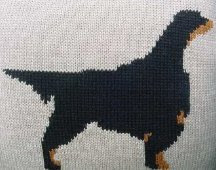
A very old working dog from France, the Briard dating back to the 8th century and has traditionally guarded the flocks against wolves. Following the French Revolution, they didn't need protection dogs as much and so their role changed to that of herder. The qualities of intelligence, loyalty which makes them outstanding family dogs. Their herding instinct can not be denied and they will herd anything, pets, small children and even their master who the Briard would butt his their massive head to push in the direction he wanted. The look of the breed is distinctive with their eyebrows and beard as well as the tail that has a distinctive hook. They are noted for having double dewclaws on the rear legs and their double coat does not let mud cling to it. Briards take very well to obedience training and thrive on encouragement rather than corrections. Verbal direction works very well and their versatility made them excel in hunting and tracking. During WWII they carried food, accompanied patrols and lead medics to the wounded on the battlefield. In the US, there is a debate over who introduced them whether it was Lafayette or Thomas Jefferson, but they were recognized by the AKC in 1922. The breed is described as "a heart wrapped in fur."
If you would like to knit the charted design of the Briard, simply go to http://www.kanineknits.com/kanine_knits_knitting_patterns.htm
























